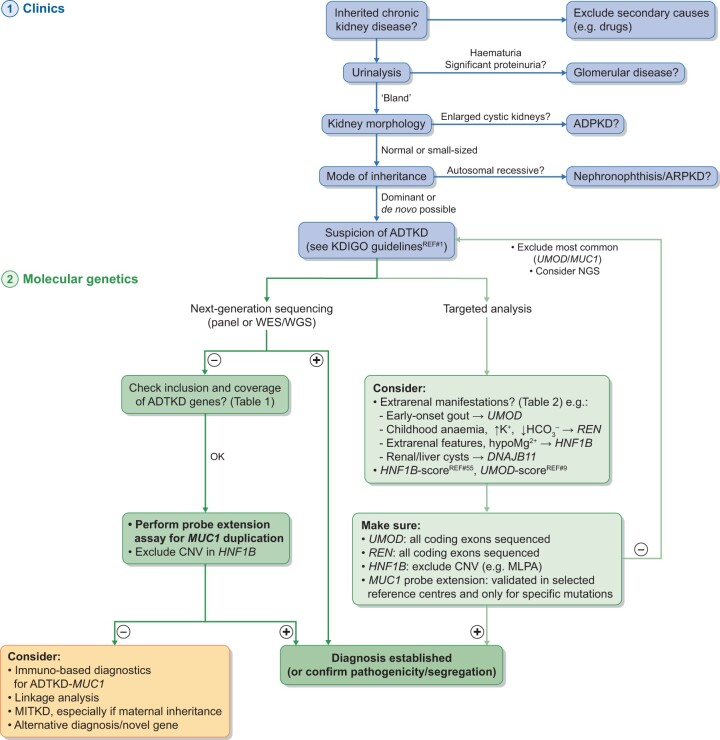FIGURE 2.
Diagnostic algorithm in ADTKD. ADTKD should be suspected based on a series of clinical findings (or the absence thereof) and typically a positive family history (in blue) [1]. A firm diagnosis in suspected cases can only be established by molecular genetics (in green). Diagnostic approaches are likely to change with evolving molecular methodologies. Targeted analysis should take into consideration typical extrarenal features where present and may also take into account clinical scores developed for the rational prioritization of genetic tests. NGS-based approaches will likely become the preferred technology for detecting ADTKD with the limitations that variants in MUC1 VNTR are not detectable by NGS and require tailored approaches. +, positive result; –, negative result; ARPKD, autosomal recessive polycystic kidney disease; CNV, copy number variation; MLPA, multiplex ligation-dependent probe amplification.;Adapted from Devuyst O, Olinger E, Weber S et al. Autosomal dominant tubulointerstitial kidney disease. Nat Rev Dis Primer 2019; 5: 60.

